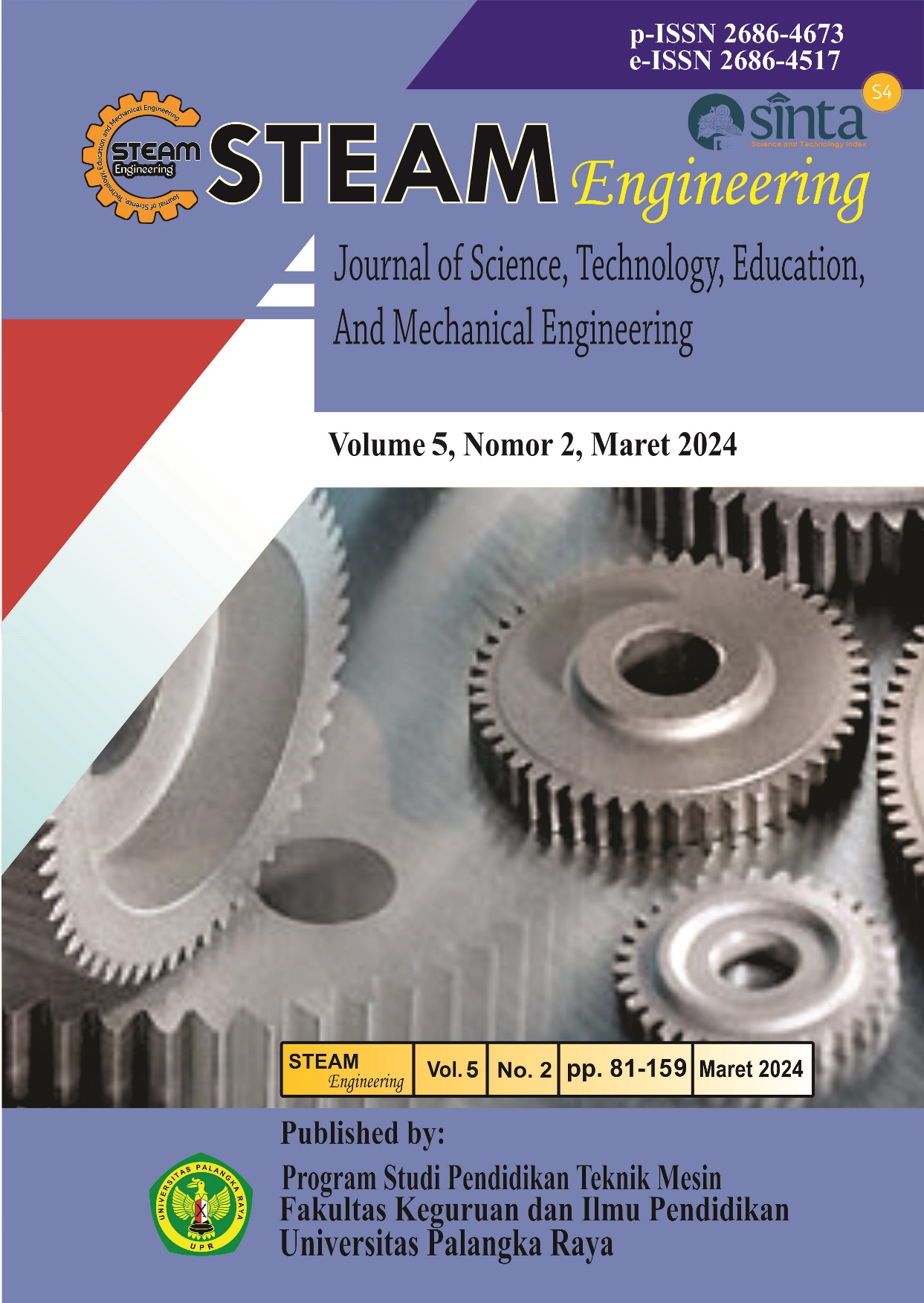IMPLEMENTASI PROJECT BASED LEARNING BERBASIS APLIKASI SOLIDWORKS PADA PEMBELAJARAN ONLINE MATA KULIAH GAMBAR TEKNIK
DOI:
https://doi.org/10.37304/jptm.v5i2.12931Keywords:
E-Learning, Engineering Drawing, Mechanical Drawing, Learning Management SystemAbstract
The purpose of this study is to see an overview or analyze: (1) student learning activity during the pandemic through online learning using University LMS. (2) Seeing an improvement in students' drawing skills in the Machine Drawing II course using the Solidwoks application. This research was conducted using Quasi Experiment (pseudo-experiment) and qualitative descriptive methods. The Quasi Experiment design used in this study is One group Pretest-postest design. The data analysis technique in this study used the help of SPSS statistical application / software version 25 for Mac. The purpose of the data analysis technique is to see improvements in the learning outcomes of Machine Drawing II by applying the Project Based Learning model assisted by the Solidworks application. Data analysis in this study used non-parametric statistical analysis. Non-parametric statistics used in testing the mean comparison hypothesis are independent sample t-tests, with the Wilcoxon Test technique. The results of the study concluded that: (1) The implementation of Project-based Learning using Solidworks in online learning during the Covid-19 pandemic was proven to increase student activity, as evidenced by the results of observations of activeness, readiness, and raising ideas or ideas above 90% ("Very active" category). (2) The implementation of Project-based Learning using Solidworks in online learning is proven to improve students' skills/psychomotor knowledge. Based on the output table "Independent Samples Test" it can be seen that the significance value is 0.00 < ( ( 0.05) then the H1 hypothesis is accepted and it can be concluded that there is a significant difference between the average pretest and posttest learning outcomes.
Downloads
References
Anggaira, A. S. (2022). Project-Based Learning Model and Its implementation: Students’ Perception in Curriculum Development Subject. Journal of Education Research; 3 (3); 144-148. https://jer.or.id/index.php/jer/article/view/273
Hosnan, M. (2014). Pendekatan Saintifik dan Kontekstual dalam Pembelajaran Abad 21. Dalam Ghala Indonesia.
Hidayat, A. K. (Afif). (2021). Implementation of Project-Based Learning in Physical Education during the Social Distancing Pandemic Covid-19. Juara. https://www.neliti.com/publications/442550/implementation-of-project-based-learning-in-physical-education-during-the-social.
Ihsan, H. (2015). Validitas Isi Alat Uukur Penelitian: Konsep dan Panduan Penilaiannya. PEDAGOGIA Jurnal Ilmu Pendidikan. https://doi.org/10.17509/pedagogia.v13i3.6004.
Mulya, G. (2023). The Effectiveness of Project Based Learning in Improving Student Learning Results and Motivation in Physical Education Learning. Indonesian Journal of Sport Management, 3 (2); 273-279, https://ejournal.unma.ac.id/index.php/ijsm/article/view/7193.
Onwubolu, G. C. (2017). Introduction to SOLIDWORKS. Dalam Introduction to SOLIDWORKS. https://doi.org/10.1201/9781315382500.
Parhusip, B. R., & Wijanarka, B. S. (2018). Penerapan Project Based Learning dengan Lesson Study untuk Meningkatkan Hasil Belajar Teknik Pemesinan. Jurnal Dinamika Vokasional Teknik Mesin, 3 (1); 26–32. https://doi.org/10.21831/dinamika.v3i1.19117.
Sugiyono. (2018). Metode Penelitian Kuantitatif, Kualitatif dan R&D. Dalam Edisi Ke-26.
Suharsimi, A. (2013). Prosedur Penelitian: Suatu Pendekatan Praktik (Edisi Revisi). Jakarta: Rineka Cipta. https://doi.org/10.1017/CBO9781107415324.004.
Sukardi. (2013). Metodologi Penelitian Pendidikan: Kompetensi dan Praktiknya. Bumi Aksara.












